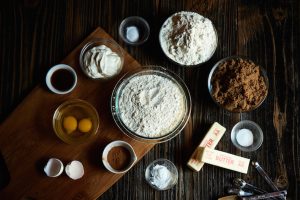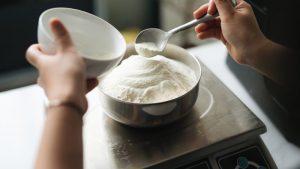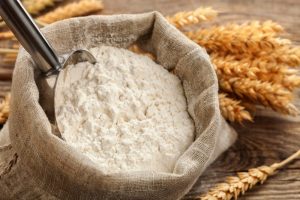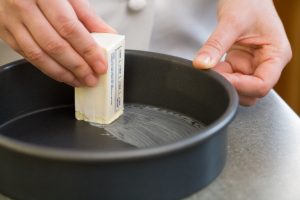Struggling to bake the perfect cake? Never been able to get the recipe you saw online, spot on? Well then, we think you should check out our 5 best tips to bake like a pro! Because after all said and done, when it comes to baking, you play by the rules!
Tip 1- Use Room Temperature Ingredients
As you may have already seen, many recipes mention room-temperature butter or eggs. You should not ignore this step! Baked goods start by creaming butter and sugar, which is made infinitely easier with gently warmed ingredients- if you’ve ever tried to stick an electric mixer in a brick of rock-hard cold butter, you know why.
Tip 2- Butter and Flour Your Pans Generously
When a recipe specifies to grease or flour your vessel, always make sure you do. If not your batter or dough will stick to the pan and trust us, you wouldn’t want that! Next time you get baking, remember to apply a generous amount of butter to the corners, bottom and even the sides of the pan! However, when it comes to flouring a pan, add in more than enough to cover, tip the pan to coat completely, then tap out the excess. Be careful where you hold it—finger marks on the interior leave the pan exposed and are opportunities for the batter to stick.
Tip 3- Weigh Ingredients
Successful baking means eliminating as much potential for error as possible, and that means making sure your measurements are exact. A cup of flour measured in volume, for example, can vary as much as five ounces—an amount that can mean the difference between buttery and flaky—and dense and cakey. Purchase a good digital scale to eliminate all the guesswork and the need to wash measuring cups!
 Tip 4- Out with The Old, In with The New.
Tip 4- Out with The Old, In with The New.
The majority of ingredients used in baked goods—like baking soda, baking powder, yeast, and, yes, flour—have a relatively short shelf life, so if you don’t fire up the oven frequently, purchase them in small quantities so they don’t sit in your cupboard, quietly going rancid. If you’re not sure how fresh an ingredient is, either simply buy a new one or test it. To check the freshness of baking powder, pour boiling water over a small quantity—if it bubbles, it’s still fresh. Flour should smell fresh and feel light, not chalky; and fresh yeast dissolved in warm (110-115˚) water will bubble and foam after a few minutes.
Tip 5- Take Time to Fully Complete Each Step
At one time or another, we’ve all thought, “Well, all these ingredients are going to end up in the same bowl eventually, so why not just dump ’em in together and mix it up?” Unfortunately, this easy way out only burns us in the end. It’s imperative to take the time to follow the instructions in the order they’re presented, and to do them completely and thoroughly. Creaming together butter and sugar with a handheld or stand mixer, for example, should be done before the addition of wetter ingredients, like eggs. Why? The fat in butter holds air, and, when whipped, expands. In the creaming process, sharp sugar granules slice through the butter, creating air pockets that ultimately give the pastry lift. Skip that step (or do it half-heartedly) and your final result will be dense and heavy.
A note on sifting ingredients: Unless it’s ultralight, ultra-delicate cake flour, or powdered sugar that needs as much aeration as it can get, it’s a step you can skip.
Tried out these steps? Let us know in the comments!


